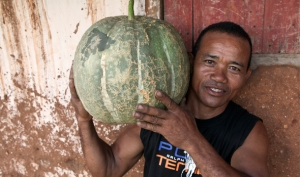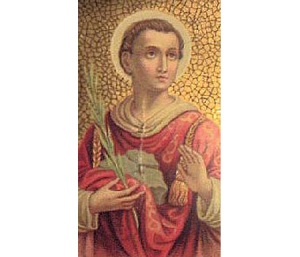The Easter Season is behind us. The special liturgical celebrations post Easter such as the the Solemnities of the Most Holy Trinity and the The Most Holy Body and Blood of Christ have occurred. Temperatures and humidity are rising. Farmer’s markets are firmly in place in neighborhoods each week. The academic year is complete and school is dismissed. Although we are in the final few weeks of spring it sure seems as though summer is upon us. Summer has its own special flavors and smells as we navigate its many opportunities and challenges; especially for expressing our faith. What ways can you and I be more intentional about including the Son of God into our summer season?
The first challenge to overcome is to recognize that schedules are radically different than the rest of the calendar year. We travel more whether into different neighborhoods or towns around where we live as well as throughout the state, country and perhaps the world. We spend more time outdoors and weekends bringing the possibilities of many new adventures. Summer time is also particularly suited to reconnect families, friends, classmates and former co-workers when the normal routine doesn’t allow the time to do so. The goal for you and I this summer is to savor God’s presence in the many unique situations you find yourself. Father James Martin, S.J. provides great insight when he writes, “If you always imagine God in the same ways, you will not be ready for the new ways He has in store for you.” Below are just a few possibilities:
1 – Walk for God’s Glory – Make an intention that the next walk you take outside in nature will be dedicated to the praise of God. Walk slowly, keeping your senses attuned to the wonders that surround you. In appreciation, pray this mantra: “Glory be to God.“ An alternative can be to pray a Rosary, especially the Luminous Mysteries. Continue to stay focused on the wonders and those whom you encounter.
2 – Waste some time – Not on mindless surfing the web, video games or binge TV watching but on just relaxing and being, “It does no good to think moralistically about how much time we waste. Wasted time is usually good soul time,” Saint Thomas Moore has observed. Summer is just the right season for idleness and just messing around with things. Quit doing and revel in just being.
3 – Read the Bible Outdoors – Think of how many times Jesus taught while outdoors or how often the Psalmists use images of the natural world. Read some of your favorite scripture passages while you are out in nature, and see how the setting enriches the experience. Variation – Bibles & Bikes or Connecting with Scripture and Canoeing.
4 – Savor Summer Sounds – Summer has sounds of its own, whether the laughter of kids playing at the pool or the serenade of crickets at night. Lie on the ground for 15 minutes without saying anything. Pay attention to what your mind is doing. Then notice what you hear around you. This exercise helps you get better at two spiritual practices — silence and listening.
St. Ignatius of Loyola teaches us that every moment of our lives is an invitation to experience God. Let’s take up this spiritual challenge and be attentive of God’s presence in our lives this summer.
Summer Spirituality reflection by John Gaffney, Diocesan Director of Evangelization & Catechesis.











